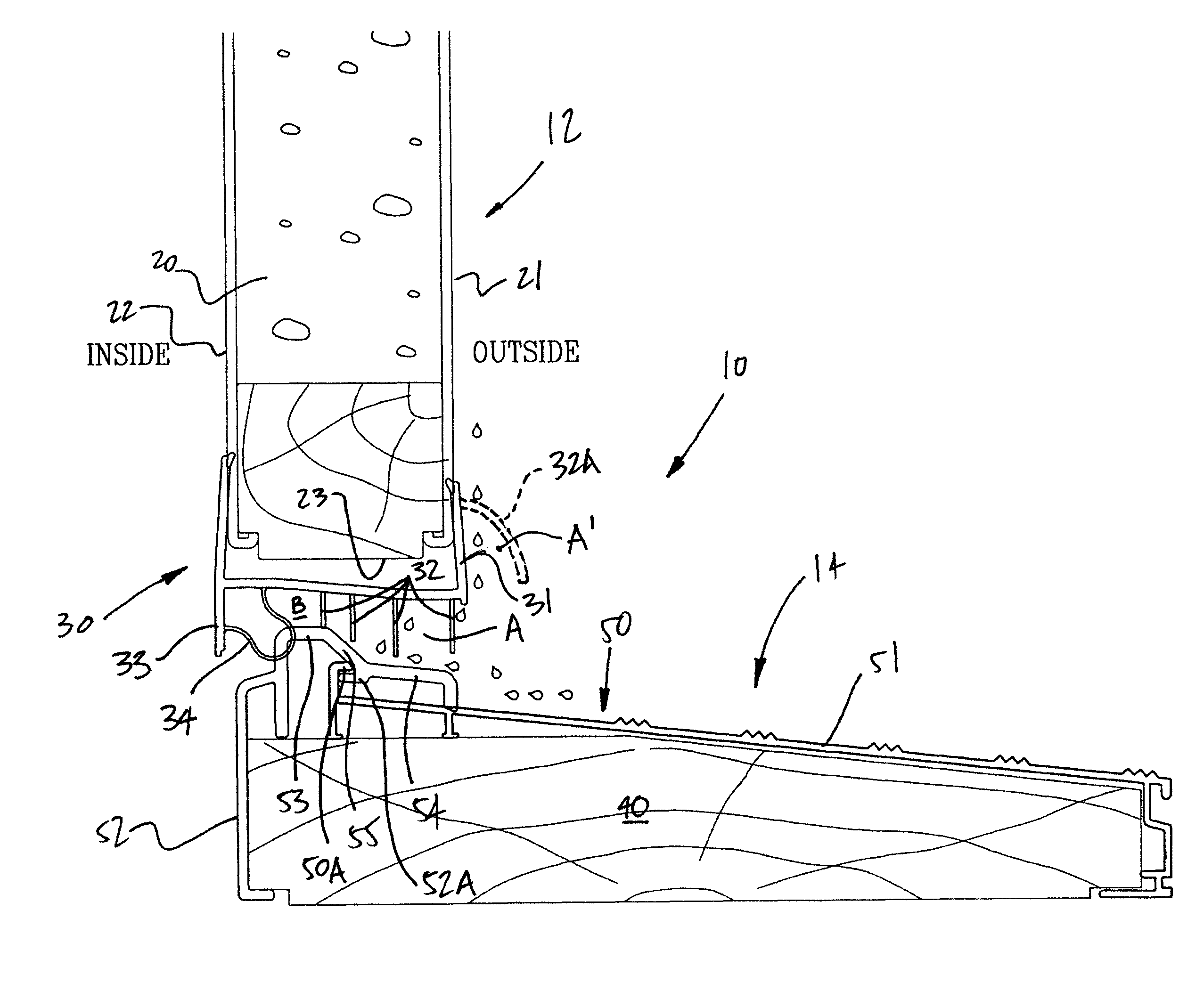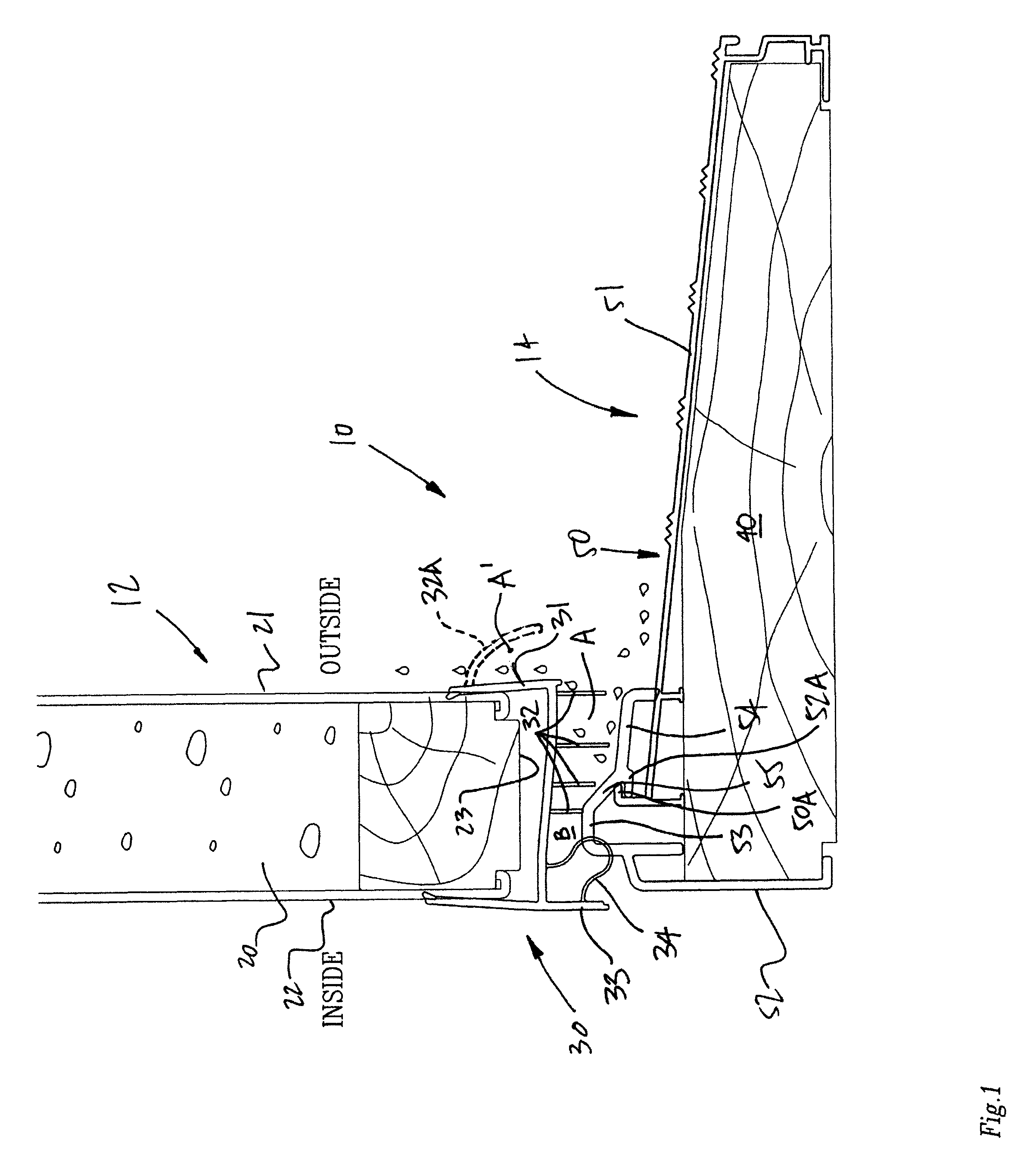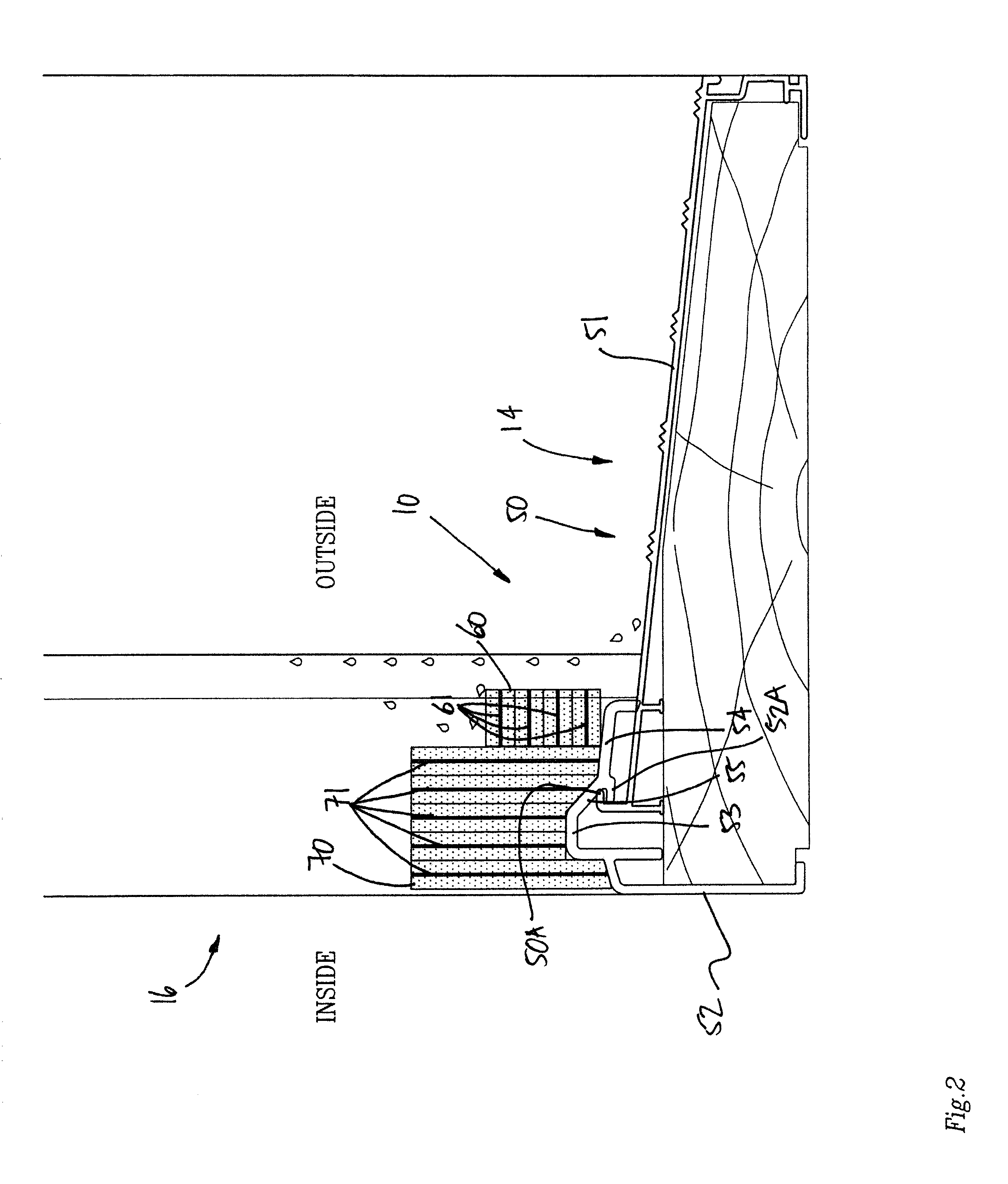Door sill assembly with sealed zone for exterior doors
a door sill and sealing technology, applied in the field of exterior doors, can solve the problems of inconvenient configuration, inconvenient use, and inconvenient installation of door sills,
- Summary
- Abstract
- Description
- Claims
- Application Information
AI Technical Summary
Benefits of technology
Problems solved by technology
Method used
Image
Examples
Embodiment Construction
[0010]Referring to the drawings and more specifically to FIG. 1, there is illustrated at 10 a door sill assembly in accordance with an embodiment of the present disclosure. The door sill assembly 10 is between a door 12 and a sill 14, and may have components in the jambs 16 (FIG. 2). The door 12 is of to type that is pivotally mounted to the doorframe so as to be pivoted between an open position, and a closed position as in FIG. 1. Such a door may be known as a hinged door, a leaf door, an entrance door, etc. Therefore, as illustrated in the figures, the door 12 may be between the inside and the outside of a building. Moreover, the door 12 typically pivots toward the interior to reach the open position, although the door 12 could pivot toward the exterior as well. Moreover, the door 12 could be fixed or sidelite.
[0011]The door 12 comprises a door slab 20 that is made of any appropriate material or combinations thereof such as wood, metals (e.g., steel), foam core, glass, etc. In FIG...
PUM
| Property | Measurement | Unit |
|---|---|---|
| threshold | aaaaa | aaaaa |
| pressure | aaaaa | aaaaa |
| sill threshold | aaaaa | aaaaa |
Abstract
Description
Claims
Application Information
 Login to View More
Login to View More - R&D
- Intellectual Property
- Life Sciences
- Materials
- Tech Scout
- Unparalleled Data Quality
- Higher Quality Content
- 60% Fewer Hallucinations
Browse by: Latest US Patents, China's latest patents, Technical Efficacy Thesaurus, Application Domain, Technology Topic, Popular Technical Reports.
© 2025 PatSnap. All rights reserved.Legal|Privacy policy|Modern Slavery Act Transparency Statement|Sitemap|About US| Contact US: help@patsnap.com



